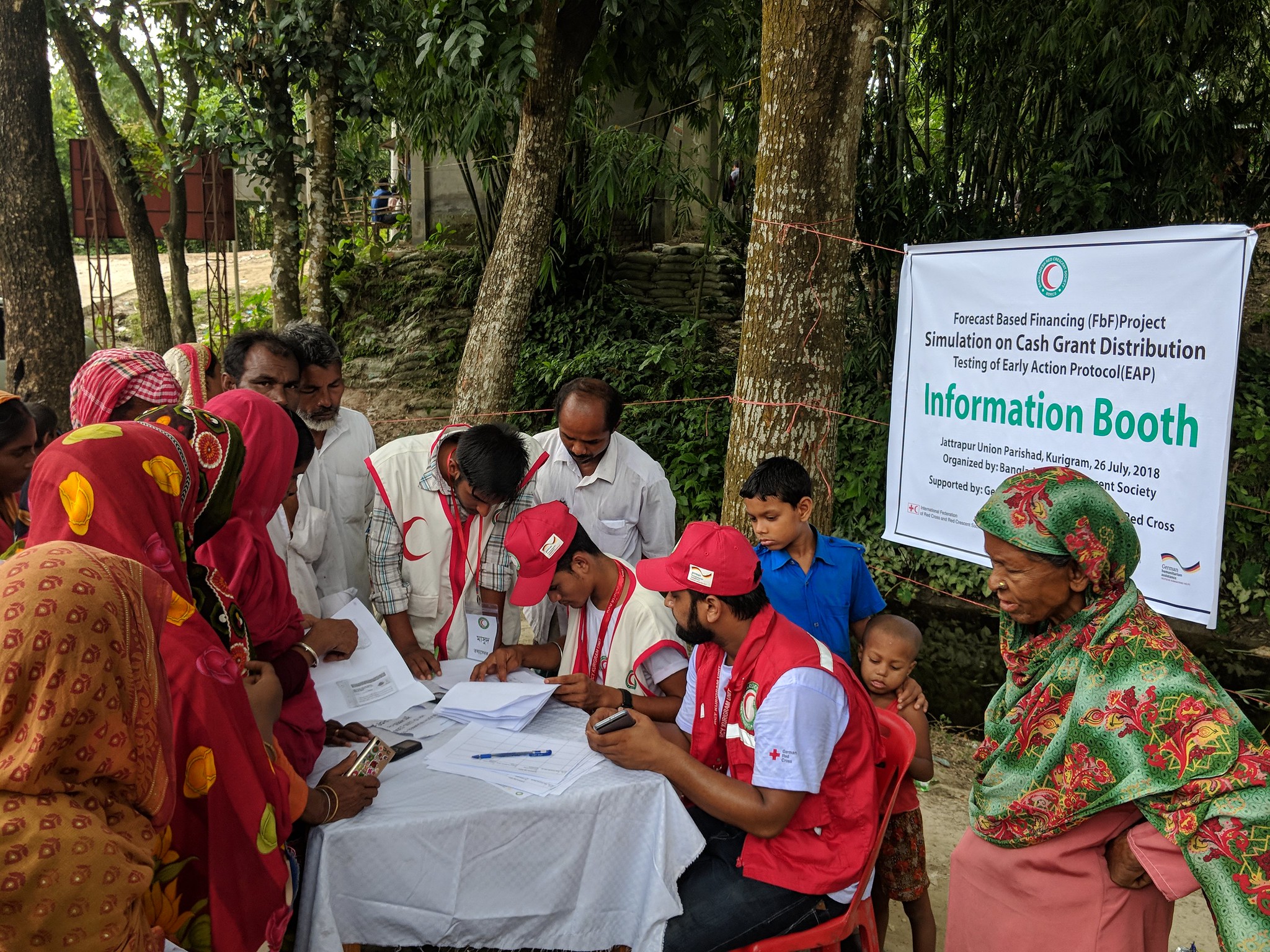Summary
Acting early, and providing households with cash can enable those most vulnerable to avoid the sale of assets to cover evacuation costs in a sudden onset disaster, as well as allows people to take necessary action to protect their homes, livelihoods and health. Cash provides flexibility and freedom of choice and often has a multiplier effect in the local economies. Supporting markets through cash at the demand (household) or supply (traders) level prior to a shock can support availability and stabilise prices. If its mechanisms are in place, cash can be digitally transferred with greater expedience and safety than other forms of assistance, and if the context allows, cash distribution, can occur within tight planning windows, for example 36-hours prior to a cyclone’s predicted landfall.
When doing Early Actions that distribute cash or voucher assistance (CVA), registration and distribution will take place prior to a disaster. If it is within the context of forecast-based financing, the Early Action Protocol (EAP), will define the process, command-chains, players and budget that enable swift CVA, and access to funds of the Forecast-based Action by the DREF.
Although the technical components for the set-up of FbF Cash and Voucher activities do not differ in scope from regular CVA in relief or recovery, the timing and execution of CVA early actions under an FbF approach must be well understood. For example, CVA within this context is unique given the unknown time of activation and the short timeframe for registration and encashment/distribution. Therefore, pre-contracting Financial Service Providers (FSP), systems for flexible targeting and swift registration, access to functioning markets and well-defined transfer values require thorough considerations and a robust set-up.
These guidelines outline a step-by-step process on preparation and implementation of Early Actions (EAs) using Cash and Vouchers, including minimum standards for the set-up of cash-based EAs. The guidelines are in alignment with existing complementary tools, including the RCRCM CiE Toolkit.

